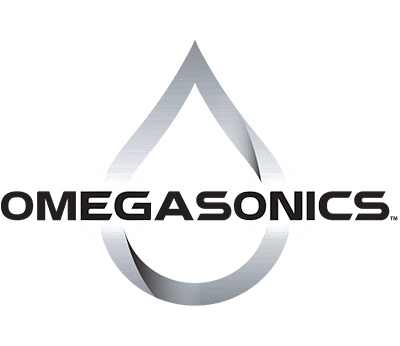Here is how our cleaning technology has helped one of America’s largest farms. At Cavendish Farms, frozen french fries are what come off the end of the line, but how the processing equipment works along the way makes all the difference in productivity.
Intricate machinery requires regular cleaning and maintenance to decrease downtime and maintain efficiency. Greater speed and cleaning results can have a positive impact on the outcome for that day, week and year.
Company Seeks and Finds Faster Cleaning Technology
Before using ultrasonic cleaning technology in its New Annan potato processing plant (Plant 1) on Canada’s Prince Edward Island, the time and process required to maintain its technology was lengthy and cumbersome. Scales, shakers, vibrators, graders, baggers, open bag detectors, metal detectors, case packers, sortation conveyers, palatizers, wrappers, gear boxes, ceiling cooling units and stainless steel filters all require regular cleaning and repairs.
Oil from the french fries clogs pivot points and other components, including parts that are more complicated to clean and maintain. Each of Plant 1’s 12 Ishida scales has 28 buckets (14 pool hoppers and 14 weigh hoppers). One bucket can take up to four hours of a skilled mechanic’s time every few months to disassemble, hand scrub each component, reassemble and replace the unit. Oil also can cause errors on the scales and other malfunctions, including errant fries in the machinery. Required repairs used to be laborious and affected plant efficiency.
Over time, it became clear to Chris Keough, packaging maintenance supervisor at Cavendish Farms’ New Annan plant, that considering an alternative cleaning process was in the company’s best interest. One weekend, he watched an ultrasonic machine clean a set of golf clubs and he got an idea. A few months later, an Omegasonics 33-gallon Pro Plus industrial unit was on the plant floor.
“Our ultrasonic system has completely changed how we do things,” said Keough.
As a result, the processing plant realized benefits in several areas.
Labor Efficiency
Keough asserts labor efficiency and time savings are where he sees the greatest benefit from its ultrasonic cleaning unit. The regular maintenance task list, on top of emergency repairs, previously was so time-consuming for his mechanic to balance that maintenance was continuously backlogged. Once they purchased the ultrasonic unit, they were able to reduce cleaning time by more than 85 percent.
It used to take one skilled mechanic four hours to clean one of the plant’s Ishida bucket scales – from disassembly to reassembly. Now, a staff member, instead of a mechanic, is able to clean eight scales in four hours, spending only 30 to 60 minutes on each scale. Without any specialized training, a plant floor worker can put the scale into the ultrasonic unit, leave it largely unattended while the machine works, and go work on other projects.
“I can’t emphasize enough the amount of time it has freed up for my mechanic,” said Keough. “We purchased our unit in June of 2014, and we can actually see the light at the end of the tunnel on our backlogged maintenance list. We’re running cleaner, better equipment and using fewer man hours.”
Increased Productivity
With less time spent on cleaning, old and new components are getting deep cleaned on a regular basis, increasing their performance and efficiency. When critical pieces of machinery are involved, cleanliness makes a significant difference in productivity.
For example, vibrators used on the plant’s processing line each contain fibers with only .02 inches between them. Over time, these spaces fill up with dirt and grime, which deadens their vibration and ultimately decreases production efficiency. These fibers and the spaces between them were nearly impossible to clean by hand. Ultrasonic cavitation bubbles reach these intricate crevices and thoroughly clean the delicate fibers and all adjoining components, while decreasing maintenance time and increasing productivity.
Extending the Life of Equipment
Every food processing company knows that getting the most from expensive equipment is necessary to maintain efficiency and a strong bottom line. At Cavendish Farms’ New Annan plant, most of their Ishida bucket scales are older models. Some are obsolete, and three of them are approximately 25 years old. New scales would require an investment of approximately $150,000 each. Regular ultrasonic cleaning literally extends the life of these units.
“Some of our scales have never been cleaned as deeply and thoroughly as is now possible,” said Keough. “Purchasing the ultrasonic unit was worth the investment for a lot of reasons, but extending the life of these scales was certainly a big part of our expectations. For the cost of one ultrasonic unit, the plant is saving nearly a half a million dollars in new equipment purchases, at least for a while.”
More Effective Cleaning
Cleaner equipment works better, lasts longer and makes food safety agencies happy. In Canada, the Safe Quality Food Institute standards are high. Ultrasonic technology makes it easier and faster to meet their expectations when it comes to food processing equipment and surfaces.
While the plant never used any harsh or dangerous chemicals, Keough admits they now use a lower percentage of chemical solution than before. He added that the process of discovering what chemicals and how much to use for maximum effectiveness required some trial and error.
The soap solutions typically used in the ultrasonic units aren’t approved by Canadian regulatory agencies, so Keough and his staff had to test different strengths of their in-house solution to discover the percentage that worked best with their Omegasonics unit.
Investing More in What Works
When Cavendish New Annan’s sister plant heard about Plant 1’s ultrasonic technology investment and their positive results, it decided to purchase an 85-gallon Power Pro 6000, one of Omegasonics’ industrial units.
“The more the merrier,” said Keough. He plans to invest in a larger unit next year. To find out more about Cavendish Farms, visit cavendishfarms.com
